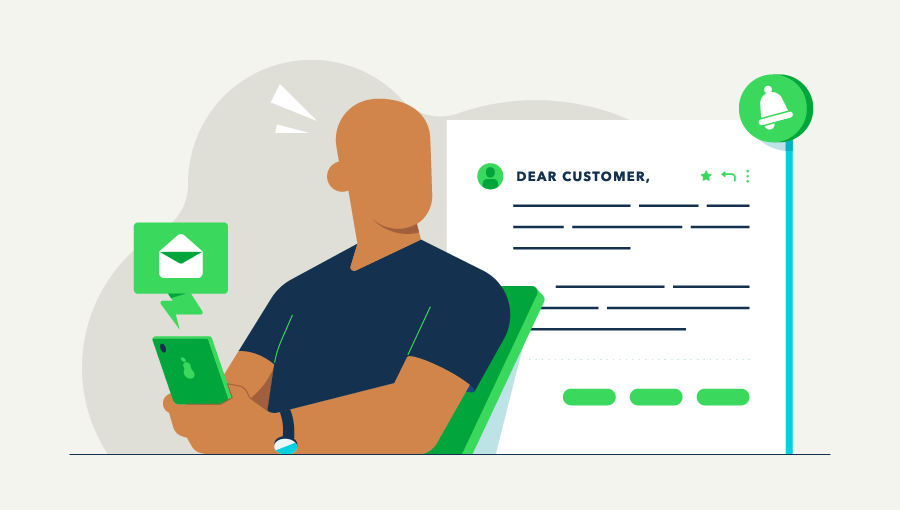

A past due invoice is a bill from a business that hasn't been paid on time. The due date indicated on the invoice has passed, and payment is still missing.
On average, small business owners spend 14 hours a week tracking down client payments. The key to securing your payment from a past due invoice is to stay calm and communicate with intention. Our guide equips you with a five-step strategy, including email templates, to chase down past due invoices and ensure you get paid on time:
An invoice becomes past due when the payment deadline specified on the invoice has passed. Before diving into collection efforts, take a moment to ensure you're working with accurate information.
 Business owner discusses how to handle past-due invoices." />
Business owner discusses how to handle past-due invoices." />
Double-check the invoice details, like the amount, due date, and payment terms, to confirm everything is correct. This also includes reviewing any previous communication attempts you've made regarding the invoice. Here is a sample past due invoice for reference:
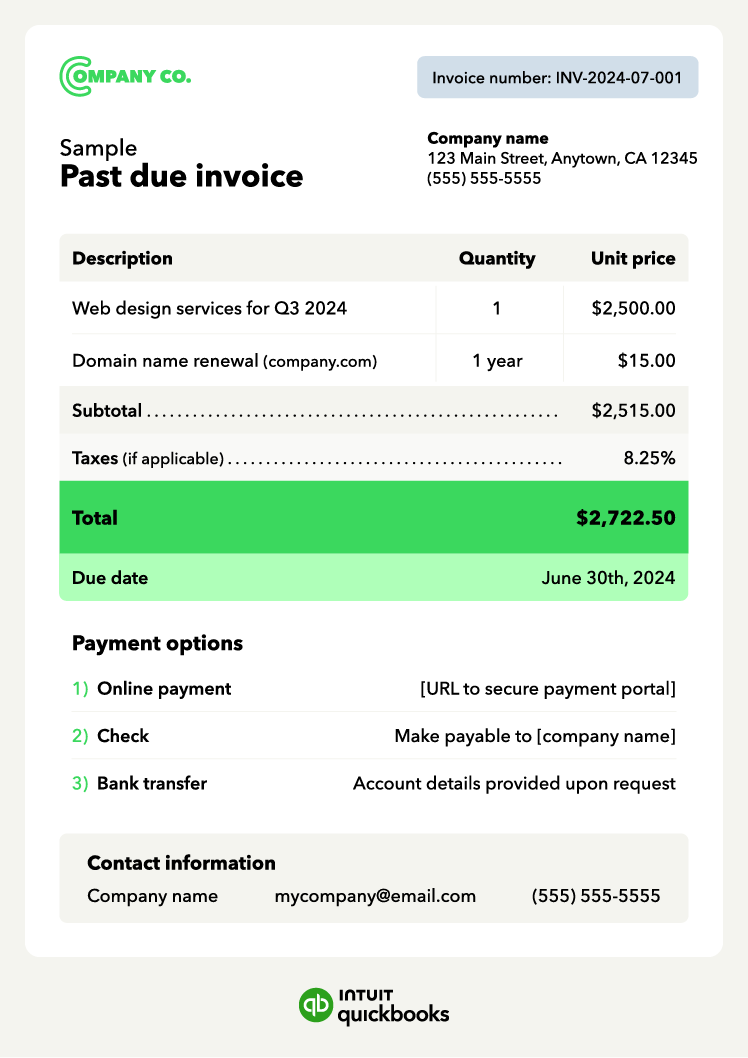
Once you've confirmed the invoice details, it's time for a gentle nudge. Craft a polite email or phone call reminding your client about the outstanding invoice. Be sure to include clear details like the invoice number. Make it easy for them to settle the bill by mentioning your available payment methods, such as online portals, mail-in checks, or credit card payments via a phone call.
Most invoice factoring agreements are “recourse,” meaning that if your Try using a professional and courteous approach to resolve the issue promptly.
If your initial attempt doesn't get a response, it's time to take a firmer approach. Send a follow-up email or make a phone call that clearly reiterates the outstanding invoice and the urgency for payment. While maintaining a professional tone, be sure to outline the potential consequences of continued non-payment.
Consequences may include:
Continue to foster a solution-oriented approach. Remember, the goal is to collect payment while preserving the opportunity for future business—not burn bridges.
Understanding your audience is key to effective communication. When crafting your final communication, personalize the message based on your relationship with the client. This demonstrates your willingness to work with them while still emphasizing the need for payment.
For long-standing clients:
For new clients or those with a history of late payments:
Remind the client how your services or products benefit their business. This subtly reinforces the value they receive and incentivizes them to pay.

With market-leading APY, no monthly fees, and seamless payments—QuickBooks Money works harder for those who work for themselves.**
Start hereWhile legal action should always be a last resort, understanding when and how to involve collections agencies or legal counsel is crucial. Here's what you need to know:
Remember, thorough documentation is key throughout the collection process. It serves as evidence of your efforts and strengthens your position if legal action becomes unavoidable.
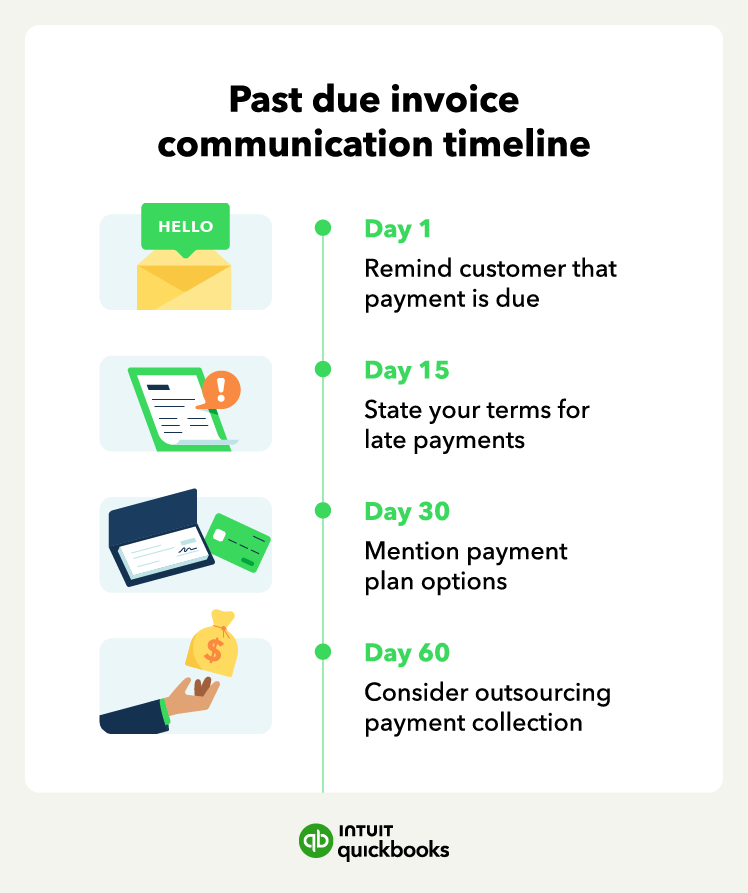
If you’re not automating reminders, starting with a payment reminder template can help you write a professional and friendly past due invoice letter.
Customize these templates to your specific business and match the tone of your customer relationship to them. Below are guides to help you start.
If you haven’t received the payment by the due date, check to see if your customer even received the bill. If you use QuickBooks , you can see whether a customer has viewed their invoice, which can tip you off that they might have overlooked the email.
Either way, send a polite email reminder mentioning that the invoice may have gotten lost in the shuffle. That might be enough to spur them into action.
Invoice due email template:
I hope this email finds you well.
This email is to notify you that payment on invoice #XXXXX for the amount of [invoice amount], which was sent on [sent date], is due today.
We have not yet received payment on this invoice and ask that you kindly confirm an ETA for the payment. If payment is not received by [late fee penalty date], a late fee will be charged.
We hope to avoid a late fee penalty, so if you have any questions about this invoice, please let us know; we will be happy to clarify.
[Your Company Name]
If you haven’t received payment after your first reminder, it's a good time to reach out with a polite phone call. Reconfirm that your customer has the invoice, and see if they have any questions.
You might also begin assessing late payment fees , but—this is important—only if you've already made the terms clear in your contract or onboarding process. Hitting a customer with an unexpected late fee could cause more animosity than it’s worth. However, it’s perfectly fine to state your terms for late payments upfront and then itemize them on the invoice.
15-day past due invoice email template:
I hope this email finds you well.
This email is to notify you that payment on invoice #XXXXX for the amount of [invoice amount] was due 15 days ago, on [due date].
We have not yet received payment on this invoice. [Optional, if applicable] As your invoice is now past its due date and grace period, a late fee of [amount] has been assessed.
The outstanding invoice amount is [invoice amount plus late fees, if applicable]. Attached is a copy of the invoice. You may make a payment here: [link to online payment or other payment methods].
Please update me with the status of your payment. Don't hesitate to reach out if you have any questions.
[Your Company Name]
Provide clients with options for responding, like email and phone calls, to make it easier for them to address the issue.
At this point, you might want to dial up your persistence. Be clear that you need to be paid, and make sure you’re talking to the right person. If you are dealing with an accounting department, it might be time to get your client involved again, as they have a vested interest in seeing you get paid in a timely fashion so the work can go on.
That’s because this is an ideal time frame to cease all current and future work. Politely let your client know via email that you will have to stop working on projects or products until the bills are current.
30-day past due invoice email template:
I am seeking your immediate attention to your invoice, which is now 30 days past due.
Our records show that we have not yet received payment for invoice #XXXXX in the amount of [invoice amount], which was due on [due date].
[Optional, if applicable] As your invoice is past due, a late fee of [amount] has been assessed.
The outstanding invoice amount is [invoice amount plus late fees, if applicable] and is [number of days] past due. Attached is a copy of the invoice. You may make a payment here: [link to online payment or other payment methods].
Please let me know the status of your payment.
If your payment has already been sent, please disregard this notice. If you have any questions or concerns or would like to discuss payment plan options, please contact me at [contact number].
I appreciate you addressing this at your earliest convenience.
[Your Company Name]
Depending on how large of a payment you're pursuing and how determined you are to collect the full amount, you may want to consider:
Using an agency comes with its own costs, but they might be more successful in collecting your past due payment. Or it might be time to deem the payment a bad debt expense or an uncollectible payment that becomes a business expense if you don't get a payment from this final email.
Instead of just demanding payment, acknowledge there might be a reason for the delay and offer to work with them to find a solution, such as a payment plan.
The traditional Net 15, 30, and 60-day overdue invoice reminders may not be conducive to your business plan . These alternative templates offer a flexible structure for crafting overdue invoice emails.
For the first contact, send a polite reminder to the individual with a busy schedule. Dispatch this email one week before the payment is due to ensure they have sufficient time to make the payment.
Gentle reminder email template:
Just a friendly heads-up that your payment for account number [Account Number] is due next week on [New Due Date]. The outstanding balance is [Amount].
We understand that busy schedules can sometimes lead to overlooked deadlines. If you've already submitted payment, please disregard this email. Otherwise, we've made it easy for you to settle the invoice online through this link: [Link to secure payment portal] (if applicable).
The invoice is attached for your reference. Please don't hesitate to reach out if you have any questions about the invoice or need any assistance with the payment process.
This is the first request for action. You are now directly requesting payment. Send this email on the due date and keep it concise.
Nudging reminder email template:
This is a friendly reminder that your invoice # [Invoice Number] is due today, totaling [amount]. We've attached the invoice for your reference.
Your prompt payment is appreciated. For your convenience, we offer several easy payment options: [list payment options].
Please don't hesitate to contact us if you have any questions about the invoice or encounter any difficulties with the payment process. We're happy to assist you.
Thank you for your business.
This is the first overdue invoice email, notifying the customer that their account is in default and immediate payment is required. Clearly outline any applicable late fees. Send this email one month after the payment due date.
Official notice email template:
This is a friendly reminder that your invoice # [Invoice Number] is past due. The total amount due is [amount]. We've attached the invoice for your reference.
We understand that things can sometimes slip through the cracks. If you've already submitted payment, please disregard this email.
To help us keep our records current, we encourage you to settle this invoice as soon as possible.
Should you have any questions or require assistance with the payment process, please don't hesitate to reach out. We're happy to help!
Thank you for your business.
Maintain a clear record of all communication regarding the invoice, including dates, emails, and phone calls.
At this stage, the tone needs to be more pressing. Inform the customer that late fees have been added and mention the possibility of their account being sent to collections to ensure they take notice. Dispatch this email two months after the payment due date.
Direct notice email template:
This email is to bring your immediate attention to invoice # [Invoice Number], which remains outstanding. The original due date was [original due date], making it significantly past due. The outstanding balance is [amount due], and a late fee of [late fee amount] has been applied, bringing the total due to [total amount due].
We understand unexpected situations can happen. However, to maintain a healthy business relationship, prompt payment is crucial.
Unfortunately, if this invoice remains unsettled within the next [number] business days, we will be forced to take further action. This may involve involving a collection agency, which could negatively affect your credit score and potentially incur additional fees.
To prevent these consequences, we strongly encourage you to prioritize settling this invoice immediately. The updated invoice with payment options is attached for your convenience: [list payment options].
If you've already submitted payment, please disregard this email and accept our apologies.
At this stage, you may need to involve a collections agency to recover the amount owed. All late fees will be applied, the account will be closed, and the customer relationship will be terminated. Send this email three months after the payment due date.
Final notice email template:
This serves as your final notice regarding outstanding invoice # [Invoice Number] for [amount due]. This includes late fees totaling [late fee amount]. A final copy of the invoice is attached for your reference.
Unless payment is received in full within the next seven (7) business days, we will be forced to take further action. This may include:
To avoid these consequences, we urge you to prioritize settling this invoice immediately. We offer several convenient payment options: [list payment options].
If you have already submitted payment, please disregard this email and accept our apologies for any inconvenience. Should you require assistance or have any questions about the invoice, please don't hesitate to contact us.

Get help and guidance when you need it from real QuickBooks experts.*
Start here@quickbooks Reminding your customers about late payments doesn’t have to be awkward. Here are some #SmallBusinessTips on getting clients to pay their bills and invoices faster. #BusinessOwner #MediumBusiness #SmallBusinessTikTok #SmallBusinessOwner ♬ original sound - QuickBooks
Late client payments can wreak havoc on your small business’s cash flow . The past due invoice email templates can help you collect payments on invoices that are already overdue. There are steps you can take with other current customers and those you work with in the future to increase the likelihood of on-time payments.
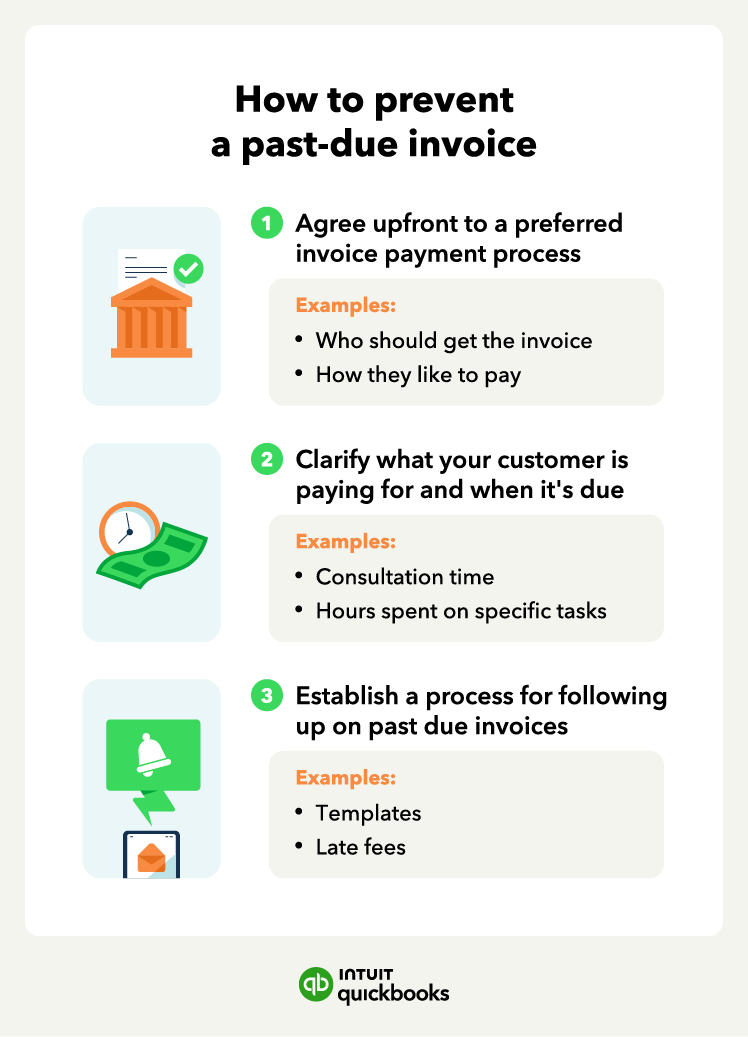
For faster payments, hold the invoice conversation right at the start before you do the work. If it’s too late for that, don’t beat yourself up. There’s always next time.
It can be easier to get payment if you’ve determined these two specific logistics of what your client wants and needs in an invoice:
It’s an extremely common situation: A client becomes accustomed to paying for almost everything one way, only to become inconvenienced when that payment method isn’t available. If they pay for everything by credit card, and you’re asking for a check, they may not ever find the time to locate their checkbook, get a stamp, and put the check in the mail.
Clients are more likely to pay on time when the invoice clarifies what they’re paying for. That’s why you want to make sure you’ve included all the information a client needs.
This could include:
If you haven’t yet cataloged your products or services, it’s a worthwhile exercise that can make everything from marketing your business to sending invoices more efficient in the future.
Be proactive and remind customers of their outstanding payments. Sending a reminder that their payment is due next week gives them a heads-up. It might get the money you’re owed in your hands more quickly.
Having “the conversation” about past-due payments is enough to have you chewing your nails and wiping your sweaty palms on your pants. When your nerves are already high, you don’t want to feel lost about what to do next.
Having a system for following up on late payments can help you keep calm. The specifics of each system will differ from entrepreneur to entrepreneur, but a few things to consider include:
No two late payment situations are exactly the same, and you’ll need to respond accordingly. But having a system in place can help you determine your next steps with a little less panic and dread.

No matter what stage your business is in, QuickBooks can help you manage your business finances.
Start hereChoosing the best billing system for your business can significantly reduce the time and effort you spend chasing a past due invoice. By implementing clear terms for payments , offering convenient options, and establishing a professional communication strategy, you can ensure a smoother cash flow and maintain positive relationships with your clients.
QuickBooks Payments account subject to eligibility criteria, credit, and application approval. Subscription to QuickBooks Online required. Money movement services are provided by Intuit Payments Inc., licensed as a Money Transmitter by the New York State Department of Financial Services. For more information about Intuit Payments' money transmission licenses, please visit https://www.intuit.com/legal/licenses/payment-licenses/.
QuickBooks Money: QuickBooks Money is a standalone Intuit offering that includes QuickBooks Payments and QuickBooks Checking. Intuit accounts are subject to eligibility criteria, credit, and application approval. Banking services provided by and the QuickBooks Visa® Debit Card is issued by Green Dot Bank, Member FDIC, pursuant to license from Visa U.S.A., Inc. Visa is a registered trademark of Visa International Service Association. QuickBooks Checking Deposit Account Agreement applies. Banking services and debit card opening are subject to identity verification and approval by Green Dot Bank. Money movement services are provided by Intuit Payments Inc., licensed as a Money Transmitter by the New York State Department of Financial Services. For more information about Intuit Payments' money transmission licenses, please visit
https://www.intuit.com/legal/licenses/payment-licenses/. No subscription cost or monthly fees. Other fees and limits, including transaction-based fees, apply.
Industry-leading Annual Percentage Yield (APY): Competitive rate information based on publicly available data for small business checking accounts provided by the largest national and online banks as of September 18, 2023. APYs are subject to change at any time.
QuickBooks Payments: QuickBooks Payments account subject to eligibility criteria, credit, and application approval. Subscription to QuickBooks Online required. Money movement services are provided by Intuit Payments Inc., licensed as a Money Transmitter by the New York State Department of Financial Services. For more information about Intuit Payments' money transmission licenses, please visit https://www.intuit.com/legal/licenses/payment-licenses/.
Features
Apple Pay: Apple Pay is a registered trademark of Apple Inc.
Claims
A past due invoice is simply an invoice that has surpassed its due date, while overdue may imply a longer period of non-payment.
Why is it important to handle past due invoices?Late payments can hurt your cash flow and make it difficult to cover your own business expenses.
What happens if an invoice is not paid within 30 days?It depends on if your business has a specific consequence outlined in your payment terms. It's best to follow up to avoid delays and ensure you get paid on time.
Recommended for you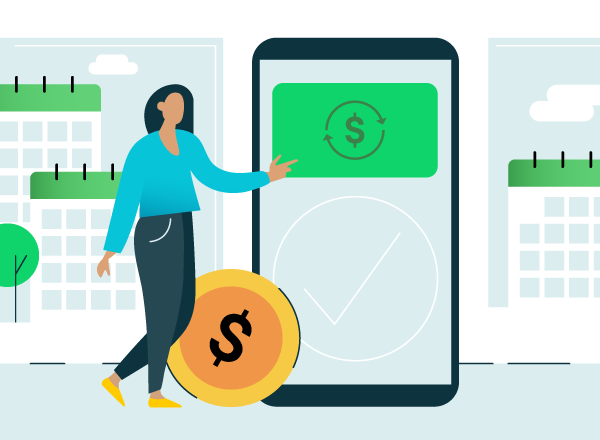
What is a recurring payment? Tips, types, and info to simplify billing
October 20, 2021

How to collect outstanding payments: Best practices for small businesses

How to set up automatic payments for your small business
We provide third-party links as a convenience and for informational purposes only. Intuit does not endorse or approve these products and services, or the opinions of these corporations or organizations or individuals. Intuit accepts no responsibility for the accuracy, legality, or content on these sites.
**Product information
QuickBooks Live Assisted Bookkeeping: This is a monthly subscription service offering ongoing guidance on how to manage your books that you maintain full ownership and control. When you request a session with a Live Bookkeeper, they can provide guidance on topics including: bookkeeping automation, categorization, financial reports and dashboards, reconciliation, and workflow creation and management. They can also answer specific questions related to your books and your business. Some basic bookkeeping services may not be included and will be determined by your Live Bookkeeper. The Live Bookkeeper will provide help based on the information you provide.
QuickBooks Live Full-Service Bookkeeping: This is a combination service that includes QuickBooks Live Cleanup and QuickBooks Live Monthly Bookkeeping.
1. QuickBooks Online Advanced supports the upload of 1000 transaction lines for invoices at one time. 37% faster based off of internal tests comparing QuickBooks Online regular invoice workflow with QuickBooks Online Advanced multiple invoice workflow.
2. Access to Priority Circle and its benefits are available only to customers located in the 50 United States, including DC, who have an active, paid subscription to QuickBooks Desktop Enterprise or QuickBooks Online Advanced. Eligibility criteria may apply to certain products. When customers no longer have an active, paid subscription, they will not be eligible to receive benefits. Phone and messaging premium support is available 24/7. Support hours exclude occasional downtime due to system and server maintenance, company events, observed U.S. holidays and events beyond our control. Intuit reserves the right to change these hours without notice. Terms, conditions, pricing, service, support options, and support team members are subject to change without notice.
3. For hours of support and how to contact support, click here.
4. With our Tax Penalty Protection: If you receive a tax notice and send it to us within 15-days of the tax notice we will cover the payroll tax penalty, up to $25,000. Additional conditions and restrictions apply. See more information about the guarantee here: https://payroll.intuit.com/disclosure/.
Terms, conditions, pricing, special features, and service and support options subject to change without notice.
QuickBooks Payments: QuickBooks Payments account subject to eligibility criteria, credit, and application approval. Subscription to QuickBooks Online required. Money movement services are provided by Intuit Payments Inc., licensed as a Money Transmitter by the New York State Department of Financial Services. For more information about Intuit Payments' money transmission licenses, please visit https://www.intuit.com/legal/licenses/payment-licenses/.
QuickBooks Money: QuickBooks Money is a standalone Intuit offering that includes QuickBooks Payments and QuickBooks Checking. Intuit accounts are subject to eligibility criteria, credit, and application approval. Banking services provided by and the QuickBooks Visa® Debit Card is issued by Green Dot Bank, Member FDIC, pursuant to license from Visa U.S.A., Inc. Visa is a registered trademark of Visa International Service Association. QuickBooks Money Deposit Account Agreement applies. Banking services and debit card opening are subject to identity verification and approval by Green Dot Bank. Money movement services are provided by Intuit Payments Inc., licensed as a Money Transmitter by the New York State Department of Financial Services.
QuickBooks Commerce Integration: QuickBooks Online and QuickBooks Commerce sold separately. Integration available.
QuickBooks Live Bookkeeping Guided Setup: The QuickBooks Live Bookkeeping Guided Setup is a one-time virtual session with a QuickBooks expert. It’s available to new QuickBooks Online monthly subscribers who are within the first 30 days of their subscription. The QuickBooks Live Bookkeeping Guided Setup service includes: providing the customer with instructions on how to set up chart of accounts; customized invoices and setup reminders; connecting bank accounts and credit cards. The QuickBooks Live Bookkeeping Guided Setup is not available for QuickBooks trial and QuickBooks Self Employed offerings, and does not include desktop migration, Payroll setup or services. Your expert will only guide the process of setting up a QuickBooks Online account. Terms, conditions, pricing, special features, and service and support options subject to change without notice.